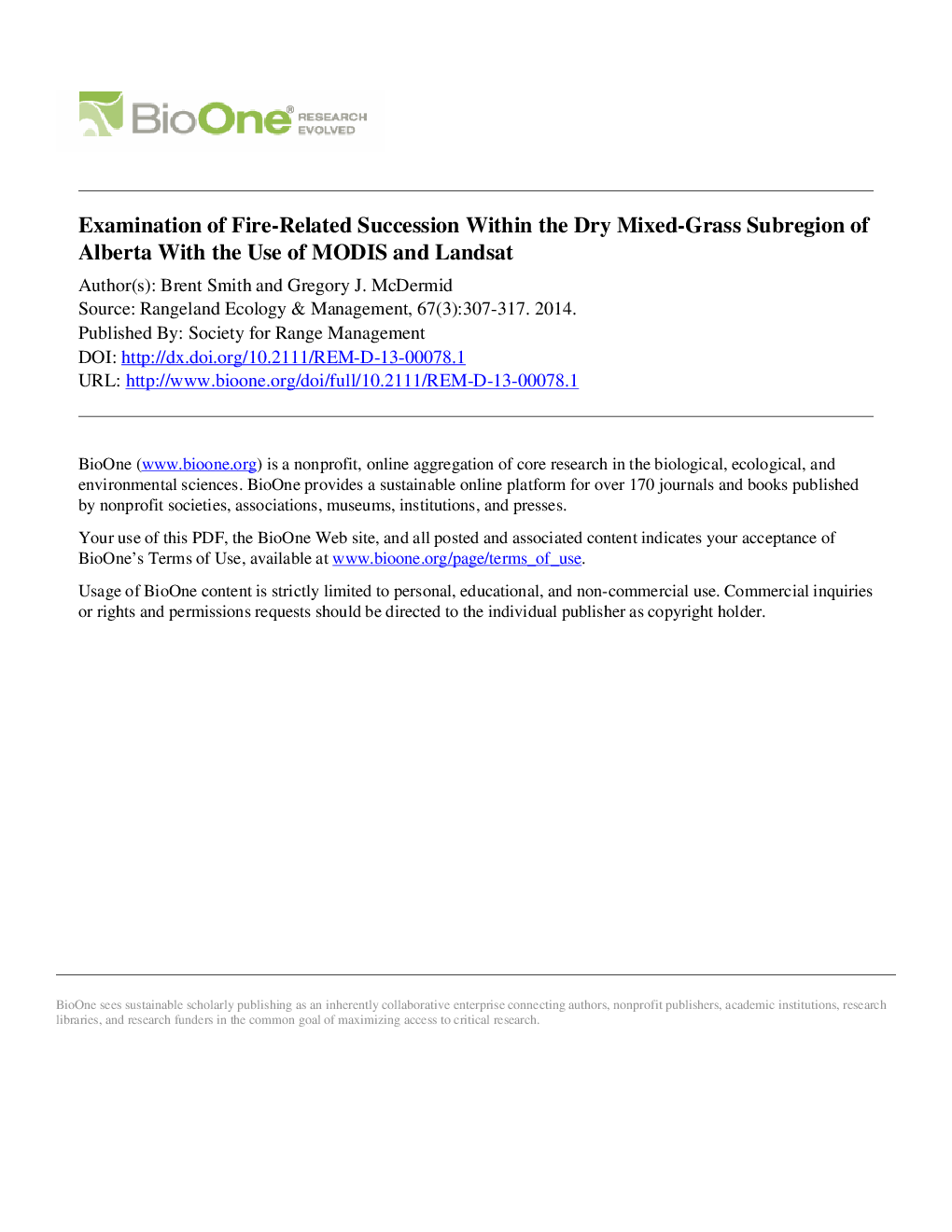| کد مقاله | کد نشریه | سال انتشار | مقاله انگلیسی | نسخه تمام متن |
|---|---|---|---|---|
| 4404344 | 1307157 | 2014 | 12 صفحه PDF | دانلود رایگان |
عنوان انگلیسی مقاله ISI
Examination of Fire-Related Succession Within the Dry Mixed-Grass Subregion of Alberta With the Use of MODIS and Landsat
دانلود مقاله + سفارش ترجمه
دانلود مقاله ISI انگلیسی
رایگان برای ایرانیان
کلمات کلیدی
موضوعات مرتبط
علوم زیستی و بیوفناوری
علوم کشاورزی و بیولوژیک
علوم کشاورزی و بیولوژیک (عمومی)
پیش نمایش صفحه اول مقاله

چکیده انگلیسی
Fire is an important disturbance process historically present across the northern Great Plains. Previous research from northern dry mixed-grass prairie suggests that C4 (warm season) grasses replace C3 (cool season) climax species with increasing fire, particularly in the spring. This hypothesis was tested at a landscape scale at Canadian Forces Base Suffield Alberta, by exploring the relationship between ecosystem states (C3 dominant, C3/C4 codominant, C4 dominant) inferred from a MODIS multitemporal plant functional type classification (pseudo R2: 0.598, overall accuracy: 0.74) and interyear fire history digitized from the Landsat archive (1972-2007). Probit regression showed that succession processes were different between range sites, where C4-dominant pixels were positively related to fire (Pâ<â0.001, pseudo R2â=â1) and completely replaced C3-dominant pixels on loamy range sites after 14 fires in 36 yr. In contrast, C3- and C3/C4-codominant pixels were related with fire on Blowouts range sites (Pâ<â0.001, pseudo R2â=â1), where C3/C4-codominant pixels replaced C3-dominant pixels with increasing fire. Finally, there were no statistically significant relationships between ecosystem states and fire for Sands range sites. Analysis of recovery showed that after loamy pixels experienced three to six fires in 18 yr followed by 18 yr of rest, C3-dominant pixels were reduced by over 30% compared to unburned pixels. Finally, intrayear fire timing (2001-2009) was explored with the use of Wilcoxon signed-rank tests between the spatial extent of spring and summer fires, with the use of MODIS burned-area data. Results indicate that fires are not limited to the spring season (Pâ<â0.05), but occur across the entire growing season. Although fire timing does not appear to play a role in driving succession, this ecosystem is generally sensitive to repeated fire, with recovery of C3 climax species taking decades.
ناشر
Database: Elsevier - ScienceDirect (ساینس دایرکت)
Journal: Rangeland Ecology & Management - Volume 67, Issue 3, May 2014, Pages 307-317
Journal: Rangeland Ecology & Management - Volume 67, Issue 3, May 2014, Pages 307-317
نویسندگان
Brent Smith, Gregory J. McDermid,